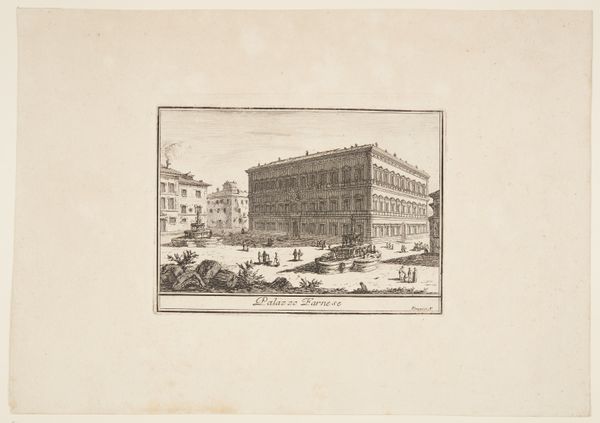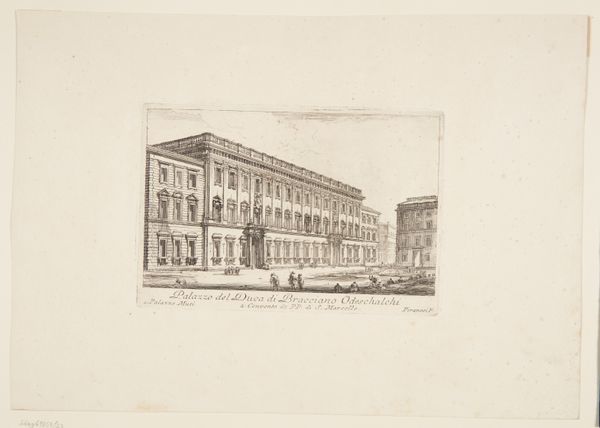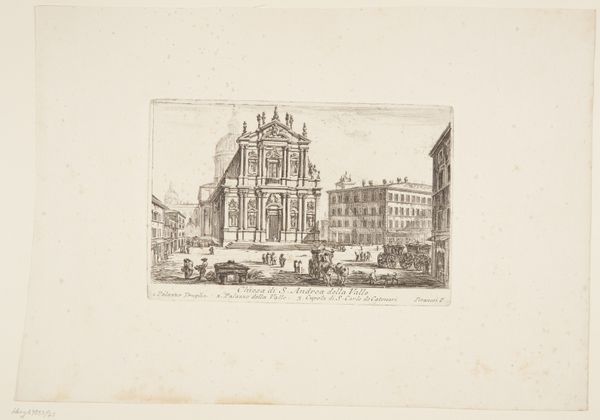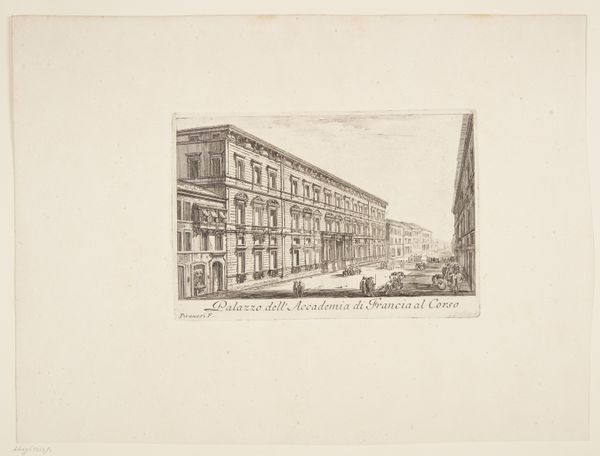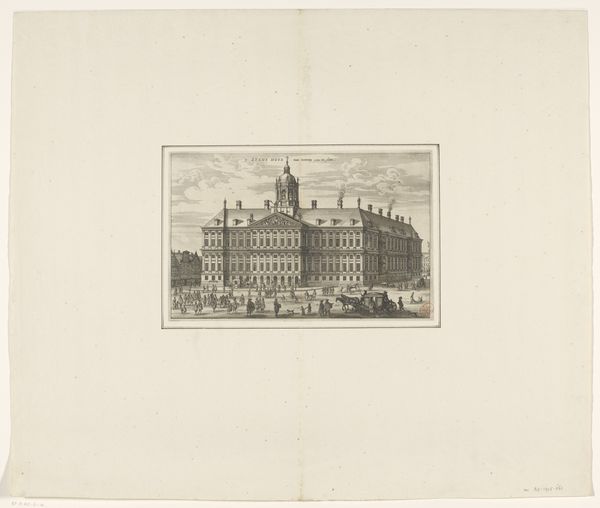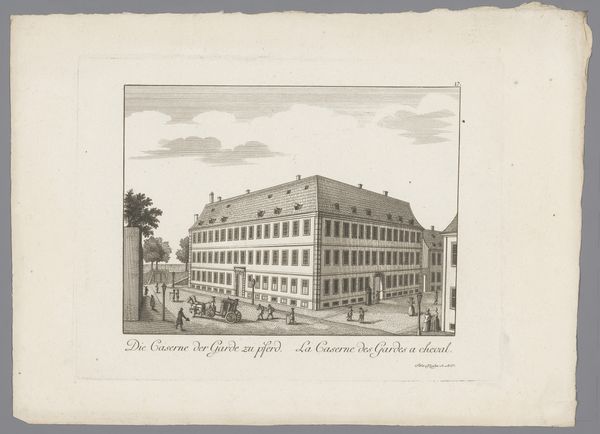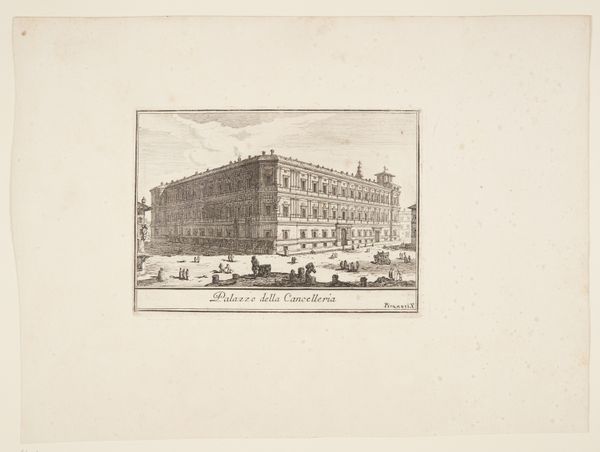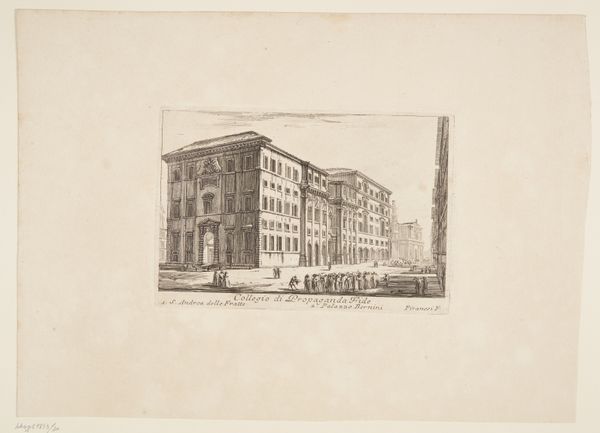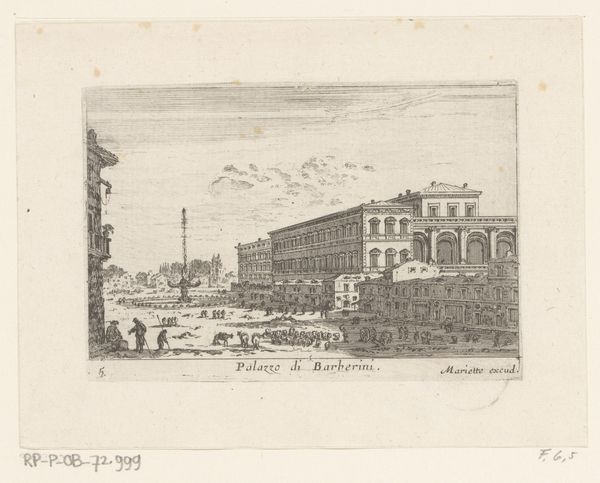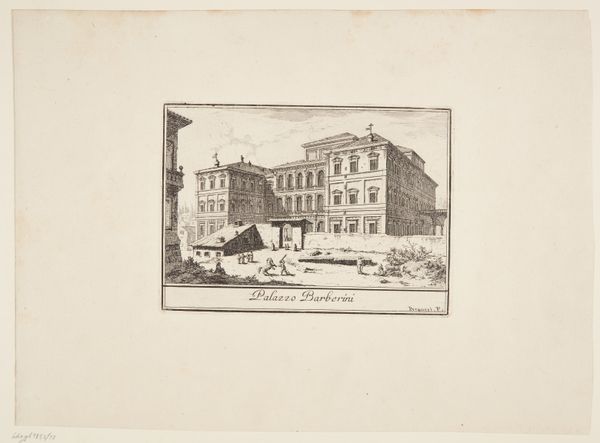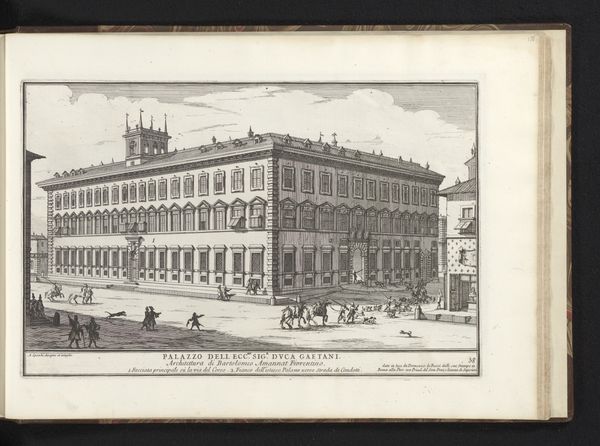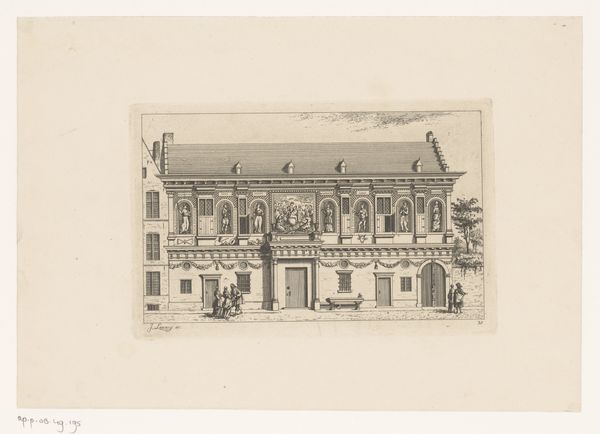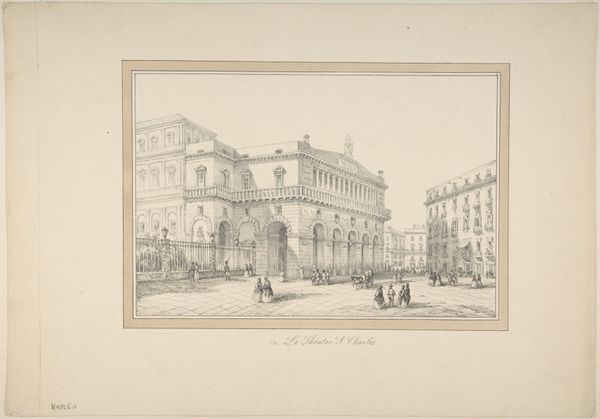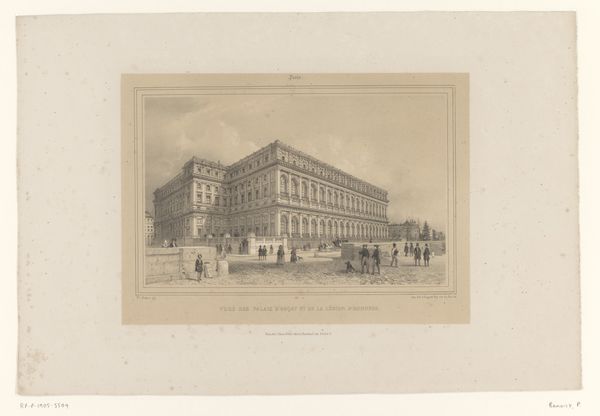
Palazzo of the Mattei Dukes. 1. Church of S. Caterina de Funari. 2. Fountain in front of Palazzo Mattei 1741 - 1748
0:00
0:00
print, engraving, architecture
#
baroque
# print
#
form
#
line
#
cityscape
#
history-painting
#
engraving
#
architecture
Dimensions: 113 mm (height) x 174 mm (width) (plademaal)
Editor: So, this print is titled "Palazzo of the Mattei Dukes," created by Giovanni Battista Piranesi sometime between 1741 and 1748. It’s an engraving, depicting a Roman cityscape, and currently held at the SMK in Copenhagen. The detail is striking. I'm curious, what stands out to you in this image? Curator: Beyond the baroque grandeur, I am struck by how Piranesi uses architecture as a vessel for cultural memory. Notice the Palazzo itself; its imposing facade almost screams of power and permanence. Yet, the figures populating the scene appear small, almost transient, juxtaposed against this architectural behemoth. What do you think that contrast is meant to evoke? Editor: Perhaps a commentary on the fleeting nature of human existence versus the enduring power of institutions? Curator: Precisely. The fountain, too, can be viewed as a symbolic representation. Fountains in art have long symbolized the source of life and abundance, often associated with concepts of rebirth and renewal. How might that symbolism relate to the themes presented here? Editor: Maybe Piranesi is suggesting that even amidst grand displays of power, there's a constant flow, a cycle of creation and dissolution. Curator: An insightful observation. This interplay of power and ephemerality reveals a nuanced perspective on cultural identity and legacy. Piranesi asks us to consider what remains, what is transformed, and what fades away. Editor: It’s interesting to consider the deeper meanings embedded in these seemingly simple cityscapes. I see so much more than just buildings now. Curator: Exactly, art encourages a dialogue between the visual and the conceptual, creating new patterns for meaning, informed by symbols and memory.
Comments
No comments
Be the first to comment and join the conversation on the ultimate creative platform.
